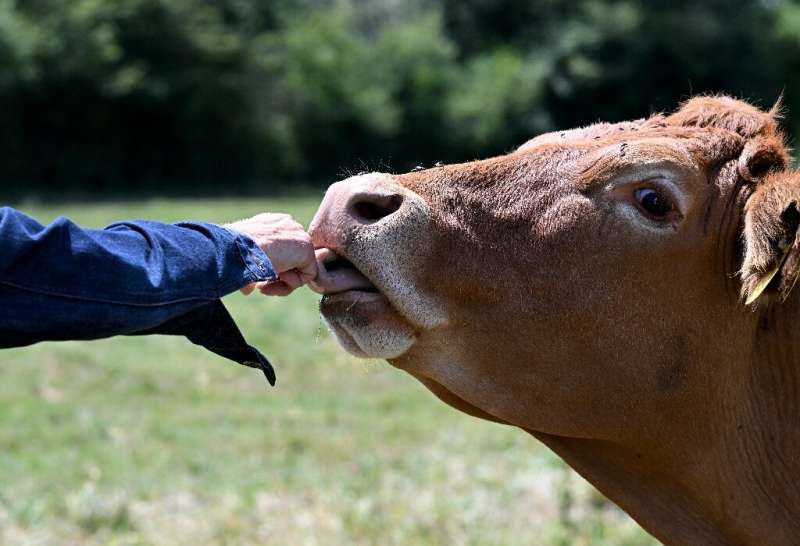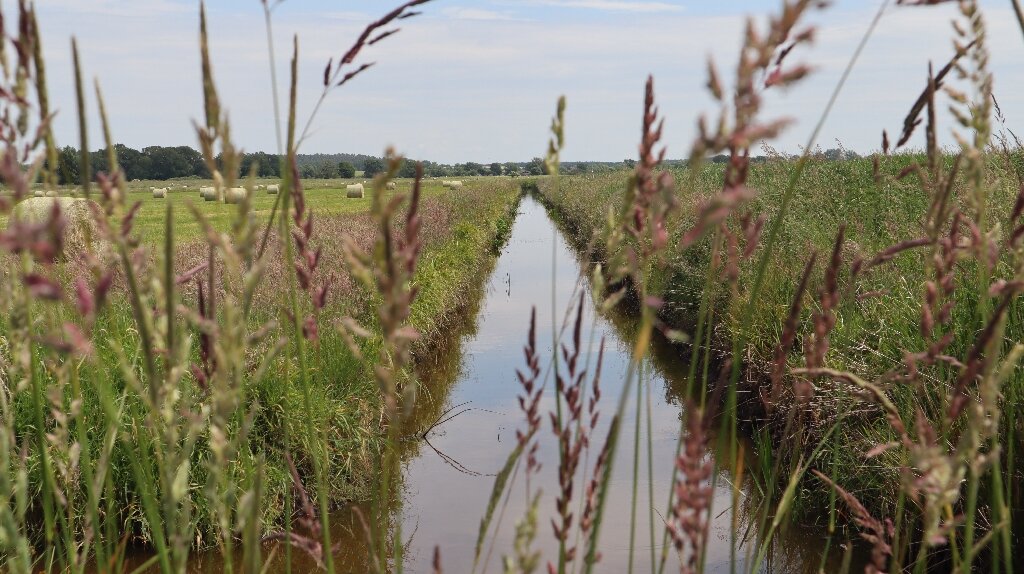Amidst the expansive fields of northern Germany, an incredible transformation has taken place – one of Europe’s most significant reclaimed marshes has been formed through the planting of an extensive bulrush ecosystem.
Only a mere four years ago, this 10-hectare (25-acre) area near the town of Malchin was nothing more than a simple field.
Similar to 98 percent of historic wetlands in Germany, this region gradually dried up over centuries due to peat extraction and the conversion of its soil for agricultural and livestock breeding purposes.
However, the land has now been rehydrated, and rushes that reach up to two meters (seven feet) in height have been planted.
Equipped with knee-high rubber boots and a GPS navigation device in hand, biologist Meline Brendel ventures through the stagnant waters of the marshes.
“Marshes cover approximately three percent of the Earth’s surface and have the capacity to store twice the amount of CO2 as forests,” Brendel explains.
Absent any intervention, these bogs act as significant carbon sinks, with the water preventing the stored carbon from escaping into the atmosphere.
However, once these marshes dry out, the soil releases the stored carbon upon exposure to oxygen.
“In this particular region, the emission of CO2 from the marshes exceeds that of all forms of transportation combined,” the scientist reveals.
In fact, a hectare of drained marshland can produce as much CO2 in a year as a car traveling 145,000 kilometers (90,000 miles), according to the Greifswald Mire Centre.
Preserving Wetland Habitats
In Germany, current and former wetlands cover approximately five percent of the country’s total land area, although the majority of them have been drained.
In an effort to mitigate these emissions, the government-funded Paludi-PROGRESS project supported the rehydration of this former marshland.
The land was reconfigured with a network of trenches, submerged, and then planted with bulrushes.
Today, the area serves as a habitat for a variety of birds, fish, insects, spiders, and amphibians. Each year, the bulrushes are harvested and utilized for practical applications such as household insulation.

Brendel carefully navigates through the wet maze, her eyes fixed on the GPS, while also measuring the water levels by inserting a spike into the peat.
However, she acknowledges that projects like theirs are still in the experimental phase. The plants used in the marshes are not yet suitable for large-scale industrial applications, such as roofing or insulation materials.
In pursuit of its goal to achieve carbon neutrality by 2045, the German government launched a comprehensive four-year, four-billion-euro ($4.5 billion) plan of action last year to improve the overall condition of ecosystems in the country.
Half of the allocated funds will be dedicated to marsh protection.
A recent law supporting similar endeavors within the EU has been adopted by the European Parliament. However, these programs have faced resistance from farmers.
Coexistence of Cows and Carbon
Brendel emphasizes that the intention is not to “impose wetland rehydration on farmers” but rather to convince them of its significance for the climate and the potential for sustainable livelihoods through wetland cultivation.
The 28-year-old scientist recognizes that farming marshes is not currently recognized as agriculture, which excludes farmers from receiving organic farming subsidies.
“We need to make the process more accessible and less bureaucratic to transform drained land back into marshes and to share the knowledge we have acquired,” she asserts.
Twenty years ago, Bavarian farmer Lorenz Kratzer decided on an intermediate solution: maintaining livestock on marshland that is slightly less wet than usual, while allowing ample space for the animals to roam.
In the scorching summer heat of Freising, located in southern Germany, roughly 20 of Kratzer’s cows seek shade under the trees and bushes amidst his grazing marshland.
As the soil dries out due to climate change, the 64-year-old farmer believes it would be highly advantageous to let the marshes return to their natural state and allow them to be flooded once again.
“Converting the land to pasture aligns perfectly with this idea. You can clearly see that the grass grows better,” he affirms.
Kratzer sells his organic meat locally, demonstrating the possibility of integrating agriculture and the protection of marshland.
Across from the revived marshland in Malchin, a herd of cows serenely grazes in a field.
“Although it may not appear so, carbon is being released from the dried-out ground used for livestock pastures,” Brendel explains, envisioning a world in which dry marshes no longer exist.
© 2023 AFP
Citation:
Rewetting German marshes to blunt climate change impact (2023, July 22)
retrieved 22 July 2023
from https://phys.org/news/2023-07-rewetting-german-marshes-blunt-climate.html
This document is subject to copyright. Apart from any fair dealing for the purpose of private study or research, no
part may be reproduced without the written permission. The content is provided for information purposes only.



